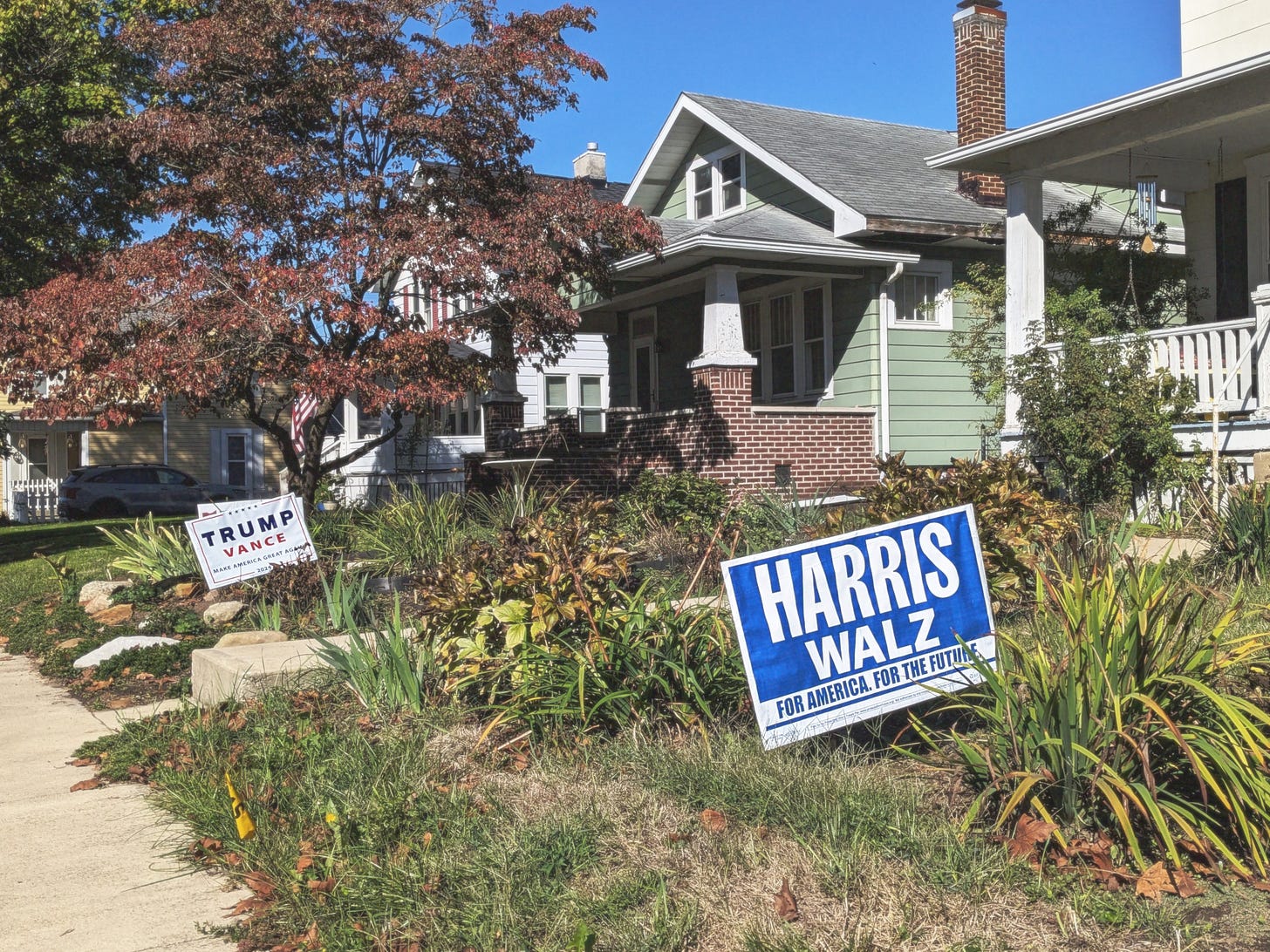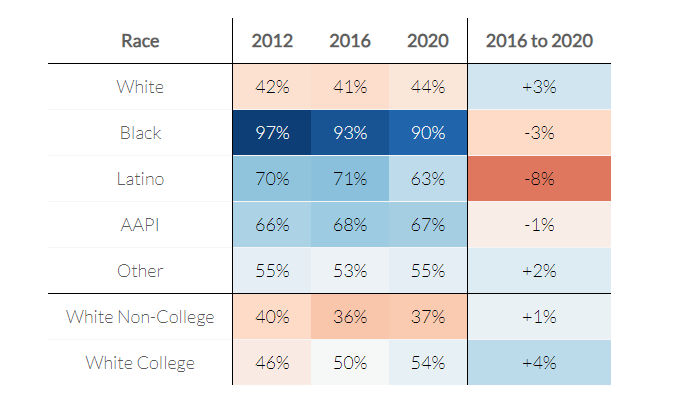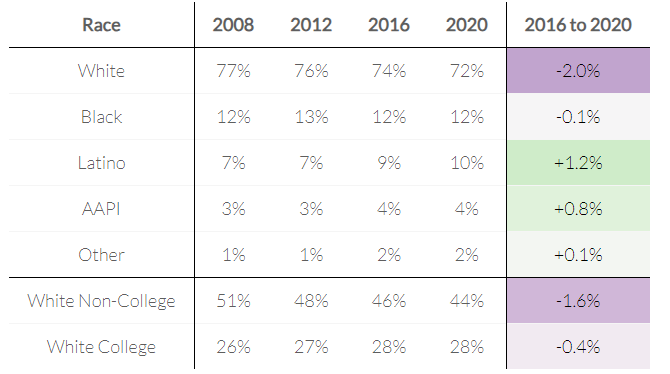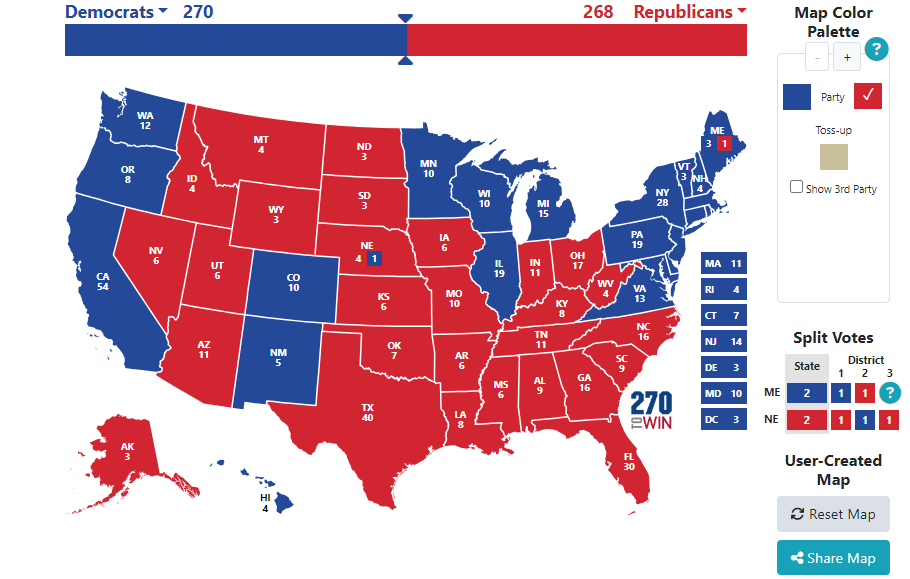A Nailbiter (Nearly) Impossible to Predict
My Final Prediction on the 2024 Race for the White House

This will be the fifth presidential election where I have had the privilege to cast my vote. It’s also been one of the hardest to predict. Kamala Harris and Donald Trump are locked in an extremely tight race nationally and in each of the seven battleground states that will decide the election. Despite the bold predictions on social media based on rally sizes or early voting numbers, I believe this will be an exceptionally close election.
By "close," I mean tight margins in each of the swing states, not necessarily a close Electoral College win. There's a plausible scenario where either Trump or Harris narrowly wins the popular vote but sweeps the battleground states, creating an electoral landslide despite small margins in each state. It’s also possible that they split them, leaving one of them with a narrow electoral college victory.
The Political Environment
On its face, this should be the Republican Party’s best shot to win the presidency since 2004, when a narrowly popular GOP war-time incumbent secured a second term. The current Democratic president’s approval rating hovers around 40 percent, and a solid majority of voters believe the country is on the wrong track. Incumbent parties have been defeated all over the world due to voter discontent with rising inflation in the post-Covid economy. Even as the U.S. economy has recovered much better from the pandemic, with inflation at the lowest rate of any major industrial economy, many Americans still feel crunched and upset at grocery prices and the rise in interest rates.
Typically, in this environment, the opposition party nominates a fresh candidate who can credibly offer change. But Republicans failed to do that this year. By nominating former president Trump, the GOP has muddied the choice for voters. By turning to Harris, the Democrats have further blurred the message about which candidate actually represents change. This dynamic makes it difficult to predict the outcome based on the political environment alone.
The rise of abortion rights as a key issue also complicates predictions. After the Supreme Court overturned Roe v. Wade in 2022, Democrats did better than expected in the midterms by framing the GOP as threatening this right. Republican-appointed Supreme Court justices were responsible for a significant policy change during the first two years of a Democratic administration. Harris has leaned heavily into protecting abortion rights and reminds voters that Trump appointed the justices who overturned Roe.
The Campaign Fundamentals
Elections aren't just about the environment—candidate quality matters too. In 2022, voters rejected many GOP candidates deemed too extreme and weird, even amid dissatisfaction with President Biden and inflation. In terms of campaign strength, Harris has the edge. Despite only being in the race for three months, she outpaced Trump in organizing efforts, fundraising, and building a strong ground game in swing states. Her running mate rollout, convention speech, and debate performances have been effective, especially considering the compressed timeline since Biden stepped aside in July. Harris has also been able to reduce Trump’s advantage on who voters trust to handle the economy and inflation while expanding the advantage Biden had over Trump on the issue of abortion.
The Demographics of the Electorate
Elections often come down to who shows up. The table below from data firm Catalist shows Democratic presidential vote share by key racial and education demographic groups from 2012 to 2020.
The following chart from Catalist shows the portion of the electorate each group represented from 2008 to 2020.
Trump’s 2016 victory relied on support from white voters without a college degree, particularly in the Midwest. While he underperformed among college-educated whites compared to Mitt Romney in 2012, his gains among non-college whites in the upper Midwest delivered him the presidency. While he maintained this base in 2020, their share of the electorate shrank, and Trump lost ground among college-educated whites.
Based on demographic changes, non-college white voters could be an even smaller portion of the electorate this time. For Trump to win in 2024, he needs to improve among college-educated whites, reduce minority turnout, or expand his support among nonwhite voters. His campaign has targeted young non-college men (see his appearances on podcasts like Joe Rogan’s, for instance) and has attempted outreach to Latino and Black voters (the racist tone of the MSG rally, notwithstanding). Meanwhile, Harris aims to keep the Biden coalition intact—maintaining strong margins with college-educated whites and Black voters while mitigating losses among Latino voters. She is also betting on abortion rights and Trump’s "bro" campaign style to boost support among women.
Let’s Predict
This is merely a prediction—the data points to many possible outcomes. But I’ll take a shot.
Starting with the baseline: Harris holds 226 electoral votes, and Trump has 219. Harris should keep lean-blue states like VA, NM, NH, and MN, while Trump should keep lean-red states like FL, TX, IA, and OH. The race will come down to seven battleground states: PA, GA, NC, MI, AZ, WI, and NV.
Michigan (19 EVs)
Michigan is the bluest of the battlegrounds and a state where Democrats performed well in 2022. Harris has regained enough support from Arab Americans and progressives despite the Biden Administration’s handling of the Israel/Gaza war, and her pro-choice stance will help secure female voters by a wider margin than Biden attained in 2020.
Prediction: Harris wins 50%-48%
Arizona (11 EVs)
Arizona went blue for the first time since 1996 in 2020, thanks to strong Latino and suburban white support. Democratic wins in AZ depend upon getting enough crossover support from Republican voters. While Harris may retain some of that crossover Biden got in 2020, declining Latino support for Democrats and border issues favor Trump.
Prediction: Trump wins 50%-48%
North Carolina (16 EVs)
Harris has made a play for North Carolina by appealing to college-educated whites, but the larger non-college white voter base supports Trump. Black turnout will be crucial, but I see Trump maintaining an edge in a state he narrowly carried in 2020 due to slight declines for Harris among non-college whites and blacks.
Prediction: Trump wins 50%-49%
Nevada (6 EVs)
Republicans have made gains among Latino voters, and Nevada’s demographics look more favorable for the GOP coalition. The state lacks a large college-educated white population to offset these losses among Latinos for Harris.
Prediction: Trump wins 49%-48%
Georgia (16 EVs)
Georgia flipped blue in 2020, fueled by strong Black turnout and gains in the Atlanta suburbs. Harris needs high Black turnout and suburban support. She should get the white suburban support Biden got but Trump’s gains with Latino voters may tilt the balance.
Prediction: Trump wins 50%-49%
Wisconsin (10 EVs)
Wisconsin has been one of the closest states in recent elections. Growth in Madison and support from suburban Milwaukee voters should help Harris, while Trump will do well in rural areas. Abortion rights will play a significant role in boosting support for Harris among college-educated white voters here.
Prediction: Harris wins 50%-49%
Pennsylvania (19 EVs)
Pennsylvania will be the deciding state. Recent elections have favored Democrats, with strong suburban support offsetting GOP gains among non-college whites. Trump’s controversial comments about Puerto Rico may energize the large Puerto Rican community in PA. Gains with college-educated voters here can prove decisive for Harris.
Prediction: Harris wins 50%-48%, giving her 270 EVs, enough for victory.
Final Thoughts
Either candidate has a plausible path to the presidency, but Harris appears to be closing stronger. Her ground game, enthusiasm, and relatively undefined image and higher favorable ratings compared to Trump give her the edge. Undecided voters tend to break for the candidate they feel better about. Harris takes the popular vote 50% to 48%, with about 79 million votes to Trump’s 76 million.
Prediction: Harris wins with 270 electoral votes to Trump’s 268.







